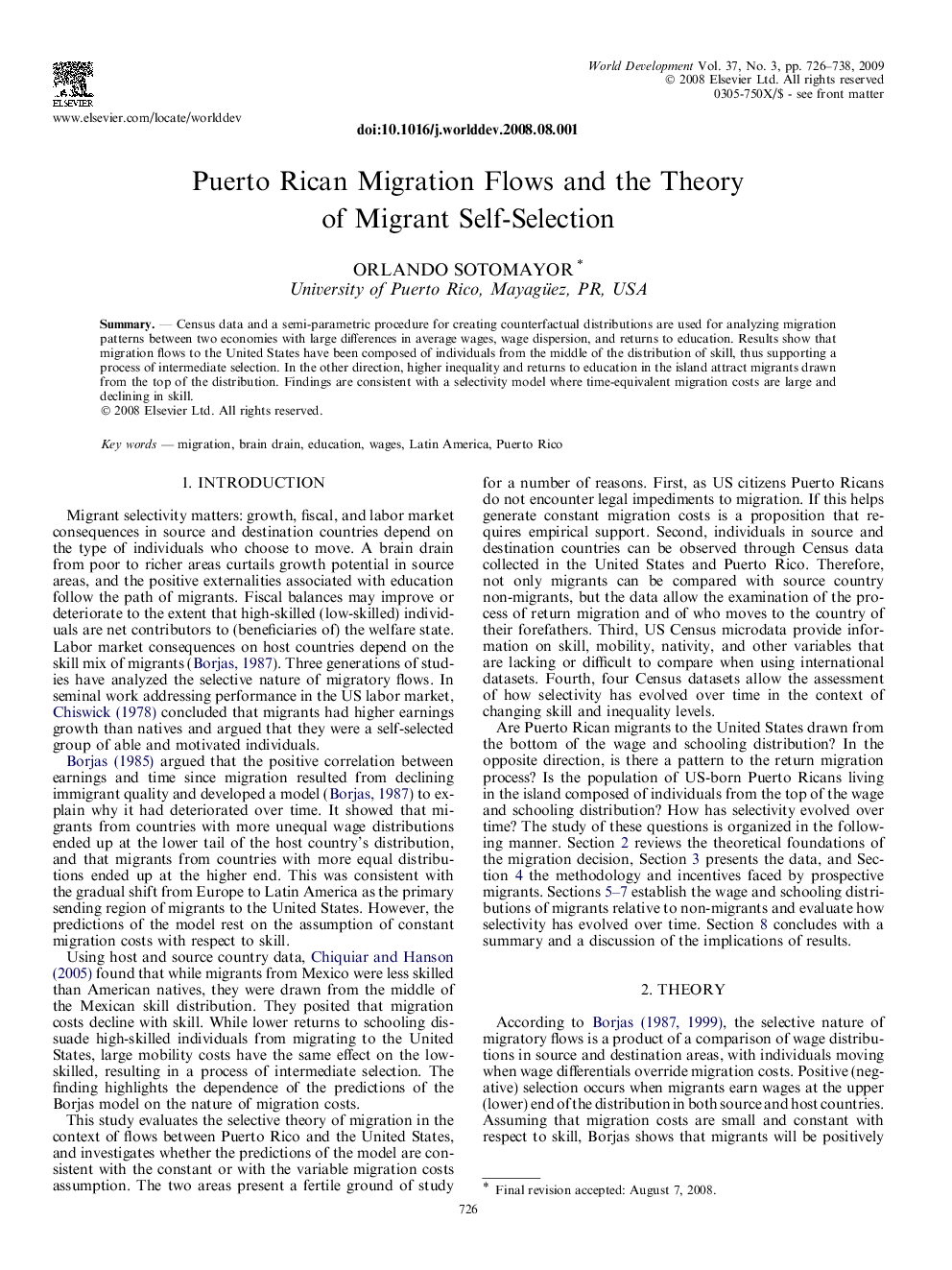| Article ID | Journal | Published Year | Pages | File Type |
|---|---|---|---|---|
| 992113 | World Development | 2009 | 13 Pages |
Abstract
SummaryCensus data and a semi-parametric procedure for creating counterfactual distributions are used for analyzing migration patterns between two economies with large differences in average wages, wage dispersion, and returns to education. Results show that migration flows to the United States have been composed of individuals from the middle of the distribution of skill, thus supporting a process of intermediate selection. In the other direction, higher inequality and returns to education in the island attract migrants drawn from the top of the distribution. Findings are consistent with a selectivity model where time-equivalent migration costs are large and declining in skill.
Related Topics
Social Sciences and Humanities
Economics, Econometrics and Finance
Economics and Econometrics
Authors
Orlando Sotomayor,
